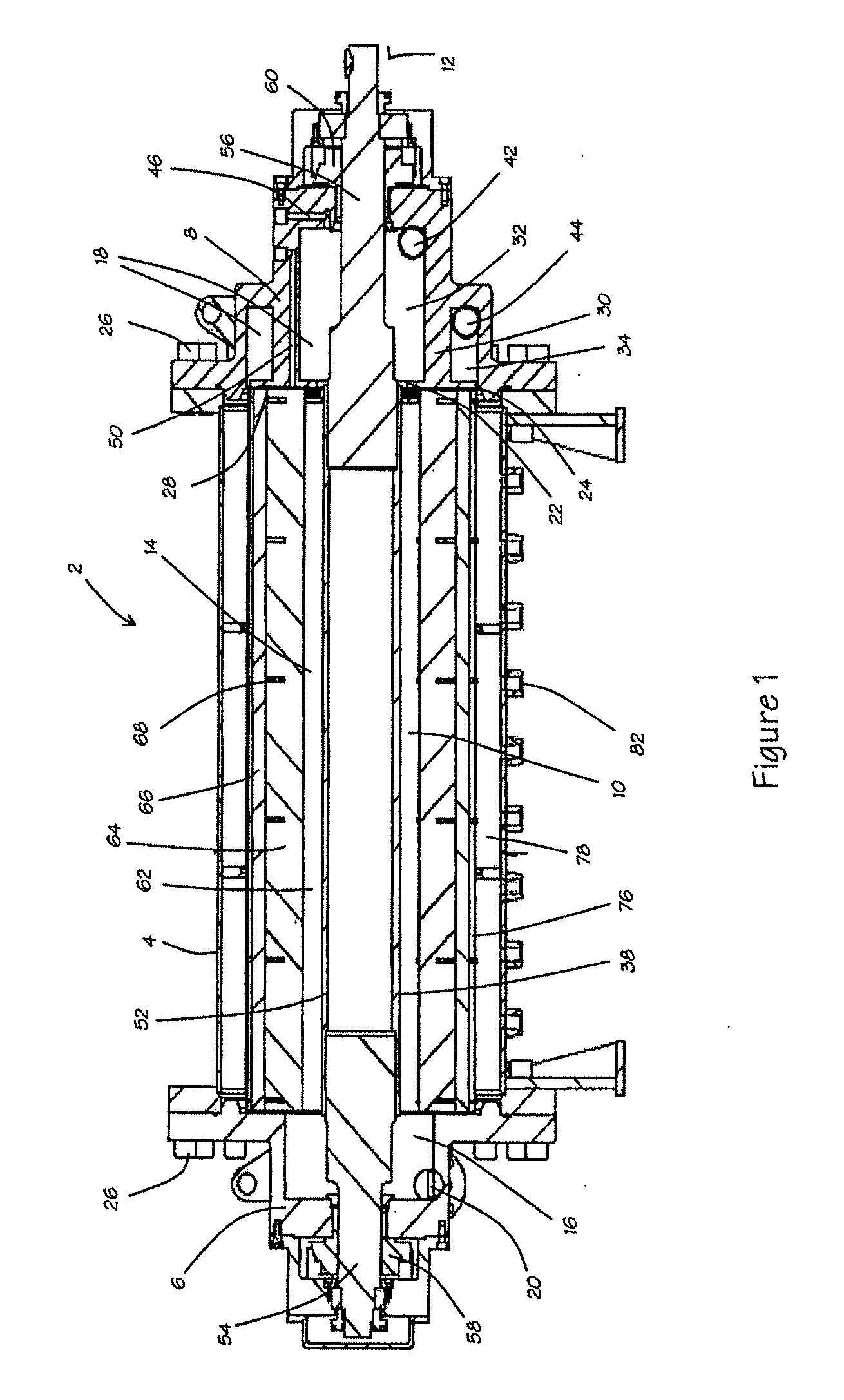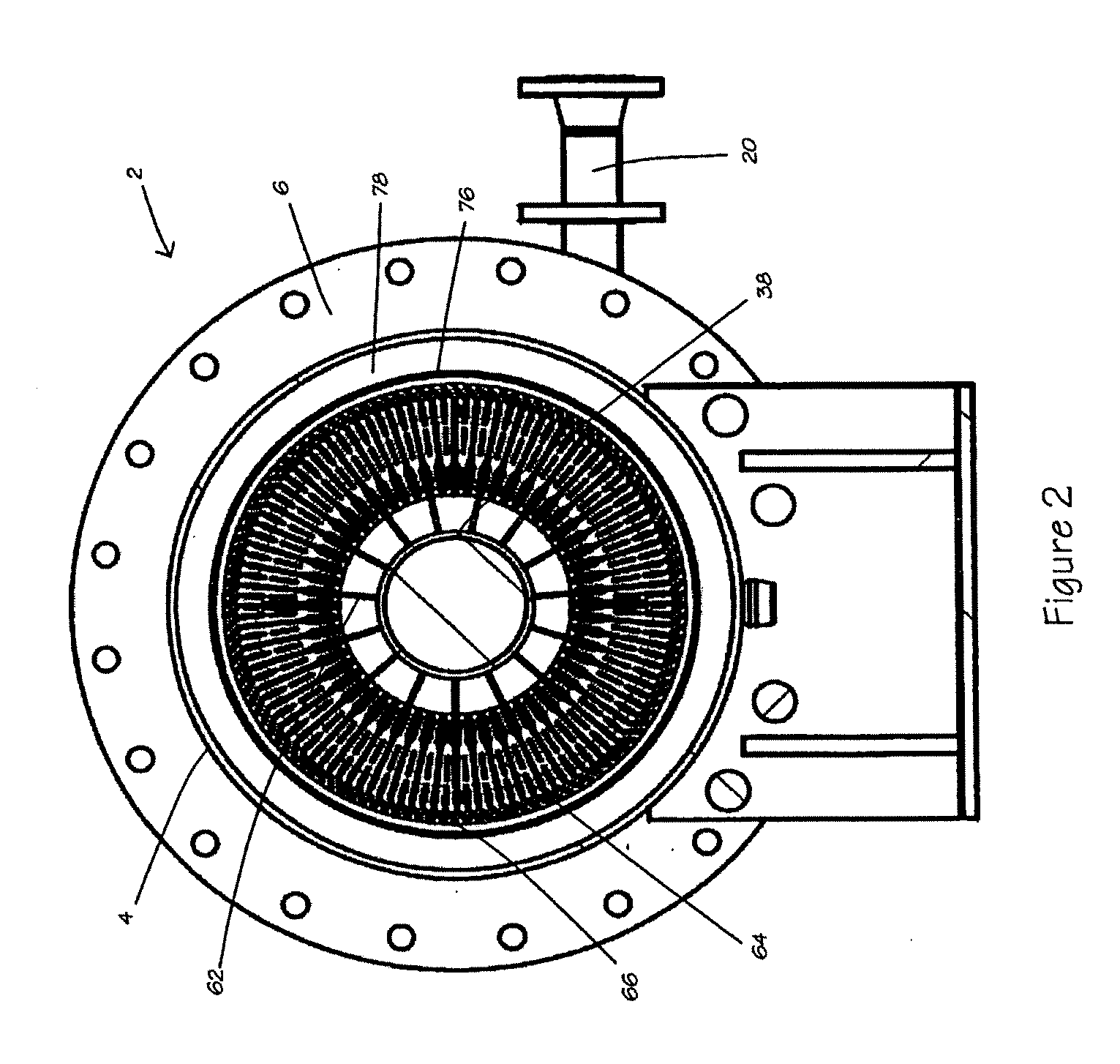A separation device
a separation device and separation chamber technology, applied in the direction of liquid separation, centrifuges, sedimentation settling tanks, etc., can solve the problems of difficult breakage, difficult separation, and difficulty in separation of immiscible liquids, and the known separators, whether cyclones or centrifuges, suffer from lack of flexibility
- Summary
- Abstract
- Description
- Claims
- Application Information
AI Technical Summary
Benefits of technology
Problems solved by technology
Method used
Image
Examples
Embodiment Construction
[0043]With reference to FIGS. 1 and 2, the separator comprises a vessel 2, constructed from an outer wall 4 and end caps 6 and 8. The interior of the vessel 2 defines a separation chamber 10 in which a rotor 12 is mounted for rotation.
[0044]The separation chamber 10 is substantially cylindrical and comprises a central region 14 and inlet and outlet end regions 16, 18. A mixture inlet 20 opens into the inlet region 16, and light and heavy phase outlets 22, 24 open into the outlet region 18. The inlet and outlet end regions 16,18 are defined within the respective end caps 6,8 which are attached to the outer wall by bolts 26 passing through respective flanges of the end caps 6, 8 and the outer wall 4. The inlet end region 16 is substantially cylindrical with a diameter less than that of the central region 14. The inlet 20 comprises a cylindrical passage disposed tangentially to the longitudinal axis of the separation chamber 10.
[0045]The outlet end region 18 is also substantially cylin...
PUM
| Property | Measurement | Unit |
|---|---|---|
| angle | aaaaa | aaaaa |
| distances | aaaaa | aaaaa |
| differential pressure | aaaaa | aaaaa |
Abstract
Description
Claims
Application Information
 Login to View More
Login to View More - R&D
- Intellectual Property
- Life Sciences
- Materials
- Tech Scout
- Unparalleled Data Quality
- Higher Quality Content
- 60% Fewer Hallucinations
Browse by: Latest US Patents, China's latest patents, Technical Efficacy Thesaurus, Application Domain, Technology Topic, Popular Technical Reports.
© 2025 PatSnap. All rights reserved.Legal|Privacy policy|Modern Slavery Act Transparency Statement|Sitemap|About US| Contact US: help@patsnap.com



